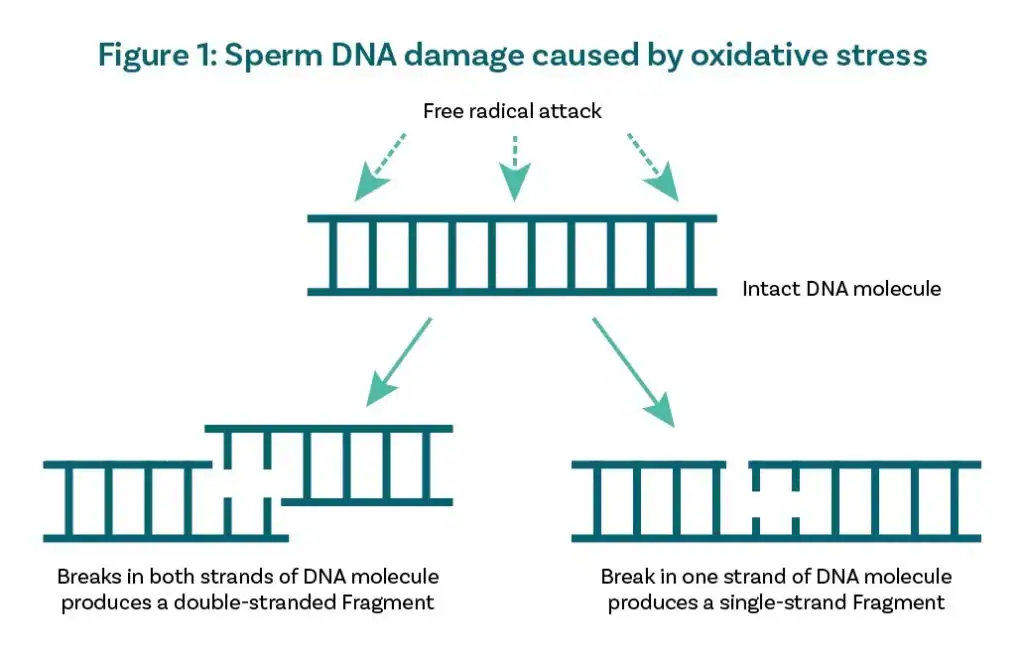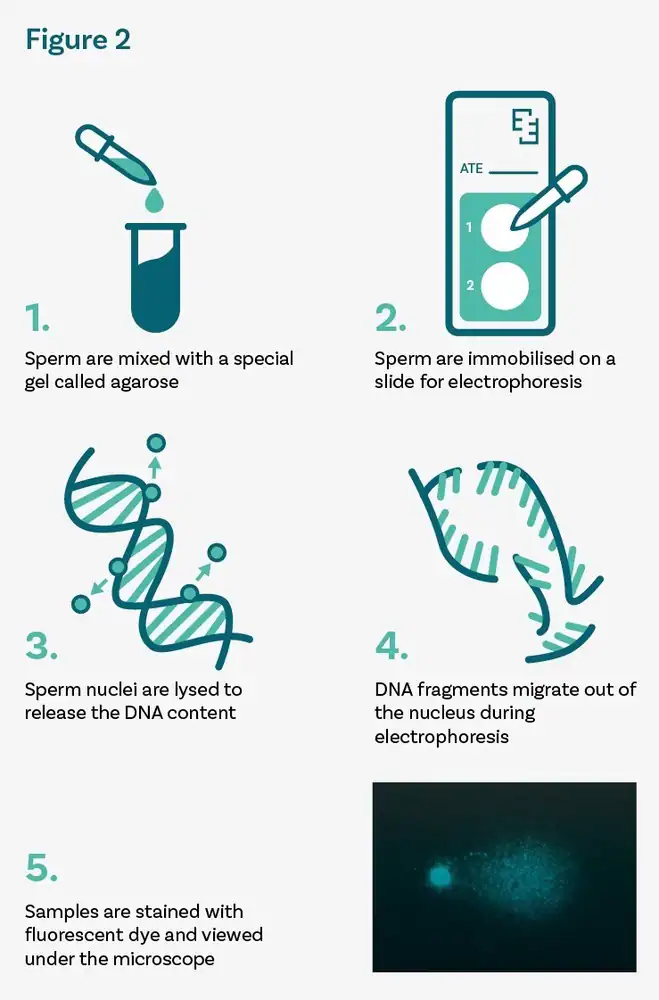The Science Behind Our Tests
Powered by SpermComet®
Examen’s sperm DNA tests, powered by our proprietary SpermComet® technology, are trusted by fertility experts in 80% of the UK & Ireland‘s top private fertility clinics. We provide the most accurate and sensitive test available to guide your next steps.
Sperm DNA Fragmentation
What causes damage to sperm DNA?
Sperm DNA damage is primarily caused by oxidative stress via highly reactive molecules called free radicals.
Free radicals attack the DNA, resulting in breaks in the DNA molecule itself. This damage can occur either during sperm production or while the sperm is stored in your body (Figure 1).
Why sperm cells cannot repair this damage
Unlike most other cells in the body, sperm do not have the cellular machinery to repair DNA damage effectively. Therefore, even men who have previously conceived will have some damage in their sperm.
Fertility problems occur when the total average damage across the sample reaches a certain critical level.


Single-strand breaks (ssDB) vs. double-strand breaks (dsDB)
Free radicals cause more ssDB in sperm DNA because it is highly susceptible to oxidative damage due to its dense packing and the presence of fewer DNA repair mechanisms compared to other cell types.
dsDB are less common but highly significant because they are particularly detrimental to sperm DNA integrity. Double-strand breaks occur when two single-strand breaks happen close to each other on opposite strands, or when a single-strand break is converted into a double-strand break due to incomplete repair.
Consequently, while single-strand breaks are more common, double-strand breaks, though less frequent, can be particularly harmful to sperm DNA integrity and overall fertility.
Examen’s world-leading SDF tests are able to measure total SDF damage (Exact® Test), and uniquely, can also specifically measure dsDB fragmentation damage only (Extend® Test).
How does SpermComet® technology work?
Examen’s tests are powered by SpermComet® technology and are based on a very well-known and established scientific technique called single cell gel electrophoresis.
The mechanism of analysis
This technique works by gently relaxing the dense DNA structure in each sperm cell. It then measures the amount of single- and/or double-strand DNA fragments present in individual sperm to determine the extent of total DNA fragmentation throughout the sample. Damaged DNA migrates out of the sperm head, creating a visible “comet” shape under the microscope (Figure 2).
This detailed examination of individual sperm in the sample -not just a bulk measurement- is what makes Examen’s range of tests the most accurate male fertility tests available.
Unrivalled accuracy through human expertise
Unlike other assays that rely on indirect measurements or automated machine processing, the SpermComet® technique incorporates a high degree of human skill and experience in the laboratory. This expert analysis ensures the data used to calculate your score is precise, reliable, and provides the best prognostic information for your fertility treatment planning.
